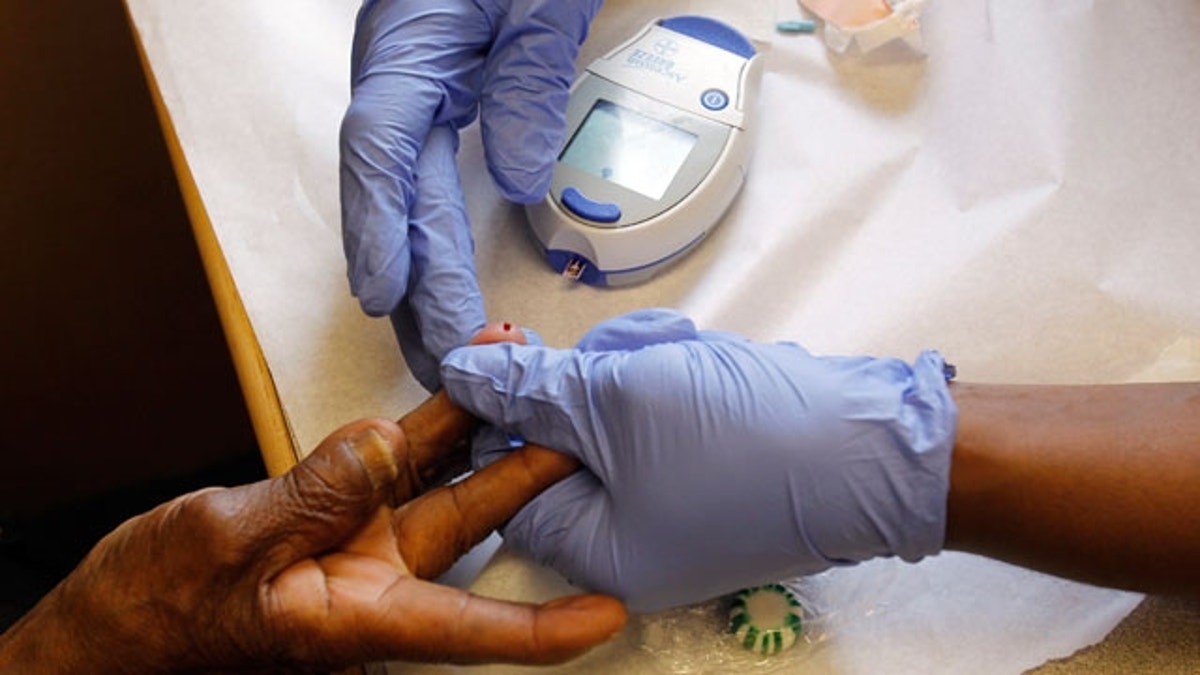
A new handheld ‘breathalyzer’ device developed by researchers at Western New England University may someday allow diabetics to monitor their blood-glucose levels in a less painful way.
Diabetes affects an estimated 26 million people in the U.S., according to the Centers for Disease Control and Prevention. Currently, the best way for diabetics to monitor their disease is with a blood-glucose test, which requires patients to prick their finger with a needle, often several times a day. While minimally invasive, the procedure can still be a nuisance to diabetics.
“You hear that one of the common complaints among the diabetic community is the needle prick, even though it’s minimally invasive, it’s still an invasive technology,” Ronny Priefer, a professor of medicinal chemistry at Western New England University told FoxNews.com. “And even knowing you’re only going to feel a little prick, if it's six to seven times a day it’s going to decrease compliance and a lot of complications come from a lack of compliance with this well-established technology, the blood glucose test.”
As a result, Priefer and his colleagues began looking into less-invasive ways for people to monitor their blood-glucose levels. Knowing that there was a linear relationship between blood-glucose and levels of acetone in a person’s breathe, they developed a ‘breathalyzer’ tool, using films consisting of two polymers that react with acetone.
Though similar technologies are being developed, Priefer’s version of the tool is cheaper and more effective – particularly because it can compensate for humidity in a persons’ breath, which many other tools are unable to do.
“It actually uses the humidity…whereas other ones, even the smallest amount of humidity messes it up,” Priefer said.
Next, Priefer hopes to begin testing his ‘breathalyzer’ in the diabetic community.
“We’ll be able to make something that is handheld and patients can bring them home for an eight-month period starting late 2014 or early 2015,” Priefer said.
In order to make sure that the breathalyzer provides accurate readings, patients will utilize both the finger prick test and the breathalyzer test in initial trials. They will also keep a food journal, so that researchers can assess whether certain foods, or behaviors, affect the device’s readings.
“Eating an apple 10 minutes before could affect their reading, using it in a nail salon, smoking a cigarette beforehand,” Priefer said.
Overall, Priefer said he hopes that the technology will eventually be able to replace the finger-prick test, and help make it easier for diabetics to monitor their condition.
“Basically, we’d be replacing an invasive tech with a 100 percent non-invasive technology,” Priefer said.
